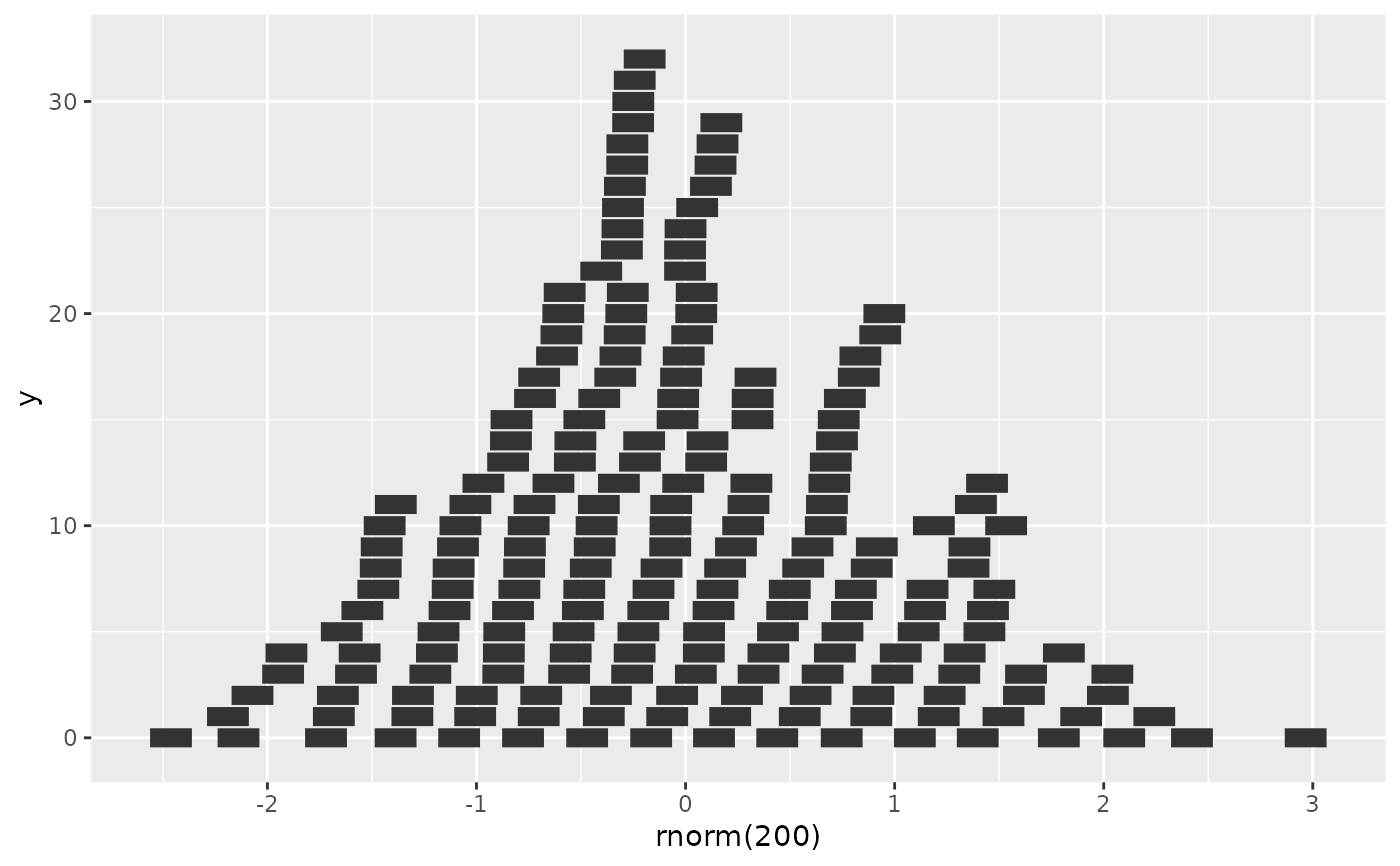One-dimensional ranged data in the x-direction is segregated in the y-direction such that no overlap in two-dimensional space occurs. This positioning works best when no relevant information is plotted in the y-direction.
Arguments
- extend
a
numericof length 1 indicating how far a range should be extended in total for calculating overlaps. Setting this argument to a positive number leaves some space between ranges in the same bin.- stepsize
a
numericof length 1 that determines how much space is added between bins in the y-direction. A positive value grows the bins from bottom to top, while a negative value grows the bins from top to bottom.
Details
An object is considered disjoint from a second object when the range
between their xmin and xmax coordinates don't overlap.
Objects that overlap are assigned to different bins in the y-direction,
whereby lower bins are filled first. This way, information in the
x-direction is preserved and different objects can be discerned.
Note that this positioning is only particularly useful when y-coordinates
do not encode relevant information. Geoms that pair well with this
positioning are geom_rect() and
ggplot2::geom_tile().
This positioning function was inspired by the disjointBins()
function in the IRanges package, but has been written such that it
accepts any numeric input next to solely integer input.

